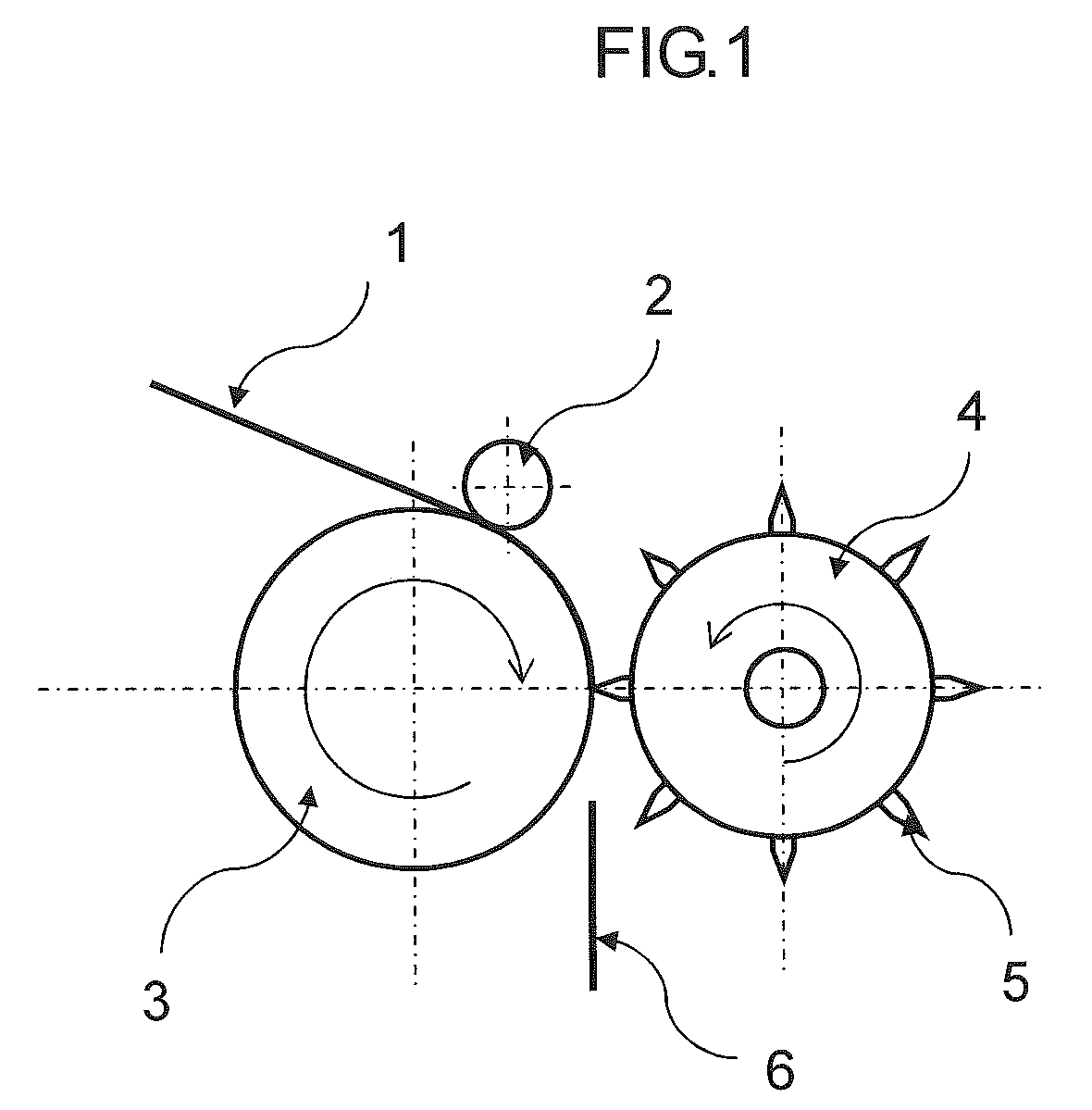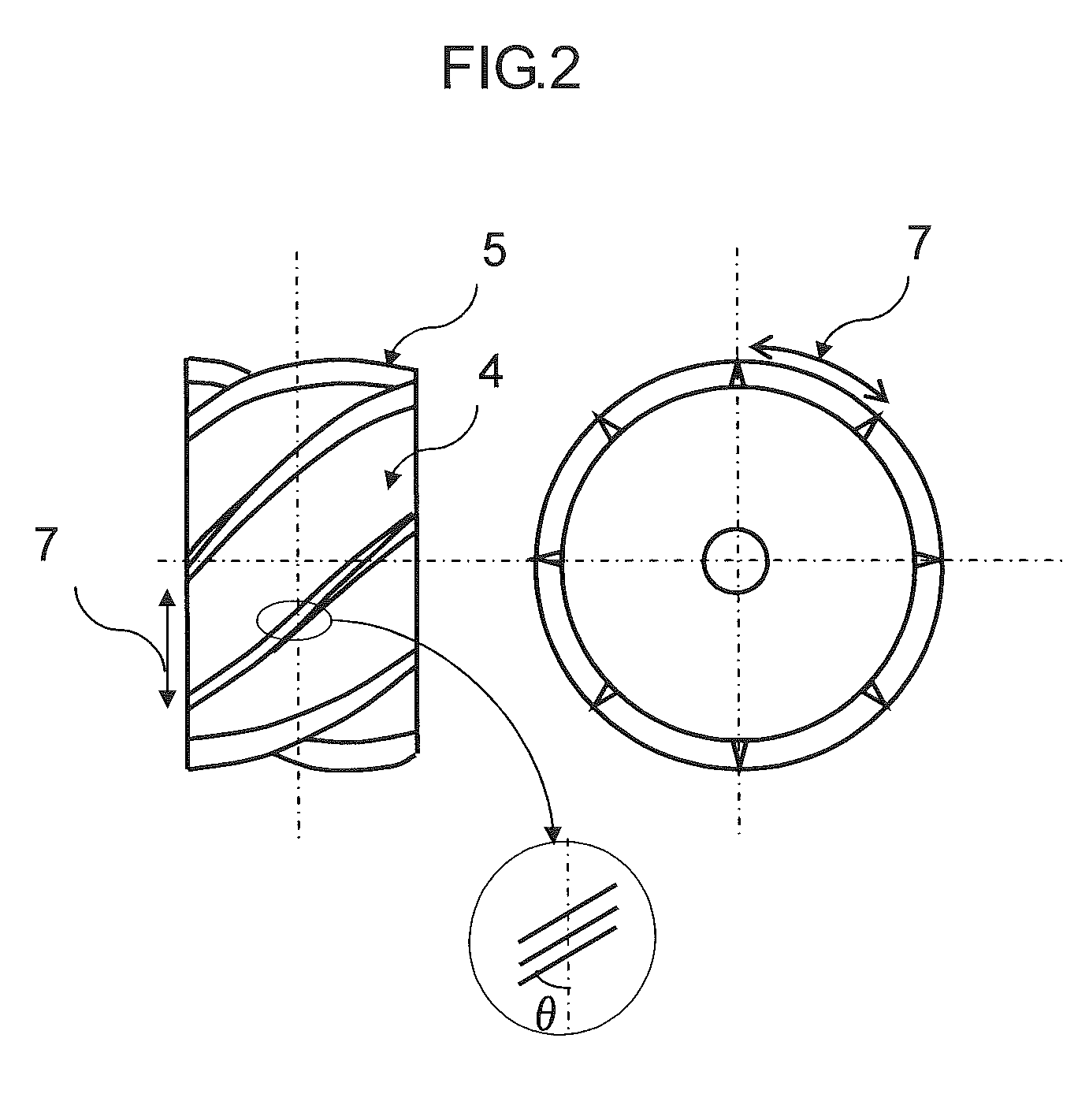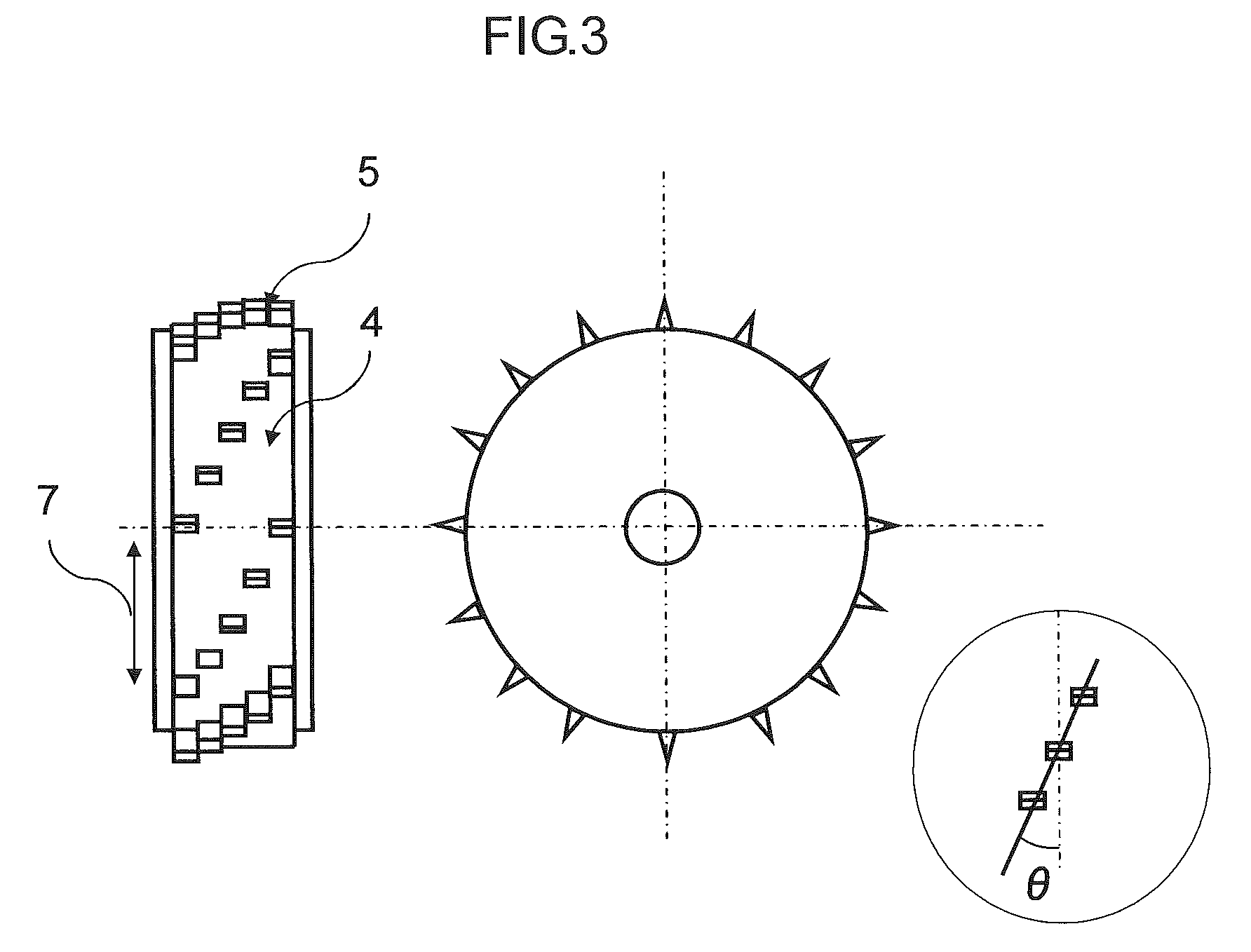Random mat and fiber-reinforced composite material
a composite material and mat technology, applied in the field of random mats and can solve the problems of discontinuous discharge of fibers from cutters, increase the cost of fiber reinforced composite materials, and deterioration of surface appearance, and achieve excellent surface appearance quality and excellent reduction of thickness and isotropy
- Summary
- Abstract
- Description
- Claims
- Application Information
AI Technical Summary
Benefits of technology
Problems solved by technology
Method used
Image
Examples
example 1
[0096]As reinforcing fibers, there were used a strand of carbon fibers, “Tenax” (registered trade mark) STS40-24KS (average fiber diameter: 7 μm, strand width: 10 mm) manufactured by Toho Tenax Co., Ltd., and the strand was widened to a width of 20 mm. As a cutting device, there was used a rotary cutter in which a spiral knife was arranged on a surface thereof, using a cemented carbide. At this time, θ in the following formula (3) was 63 degrees, and the pitch of blades was adjusted to 10 mm so as to cut the reinforcing fibers to a fiber length of 10 mm.
Pitch of blades=width of a reinforcing fiber strand×tan(90−θ) (3)
[0097]wherein θ is the angle between the circumferential direction and the knife.
[0098]For preparing a fiber opening device, SUS 304-made nipples different in diameter were welded to prepare a double tube and small holes were made in an inner tube. Compressed air was supplied between the inner tube and an outer tube using a compressor. At this time, the wind velocity o...
example 2
[0102]As reinforcing fibers, there were used carbon fiber strands, “Tenax” (registered trade mark) IMS60-12K (average fiber diameter: 5 μm, strand width: 6 mm) manufactured by Toho Tenax Co., Ltd. As a cutting device, there was used a rotary cutter in which a spiral knife was arranged on a surface thereof, using a cemented carbide. As this rotary cutter, there was used a fiber separating cutter in which blades parallel to a fiber direction as shown in FIG. 4 were provided at 0.5-mm intervals, for the purpose of miniaturizing the fiber bundles. At this time, θ in the above-mentioned formula (3) was 17 degrees, and the pitch of blades was adjusted to 20 mm. The reinforcing fibers were cut to a fiber length of 20 mm. As a fiber opening device, a tube having small holes was prepared, and compressed air was supplied thereto using a compressor. The wind velocity of air from the small holes was adjusted to 150 m / sec. This tube was disposed just under the rotary cutter, and further, a taper...
example 3
[0106]As reinforcing fibers, there were used glass fiber strands, EX-2500 (average fiber diameter: 15 μm, strand width: 9 mm) manufactured by Nippon Electric Glass Co., Ltd. As a cutting device, there was used a rotary cutter in which short blades in a 90-degree direction to the fibers were obliquely disposed and a fiber separating knife was arranged on a surface thereof, using a cemented carbide. The width of the knife was 1 mm, and further, blades parallel to a fiber direction were provided between the knives, for the purpose of miniaturizing the fiber bundles. At this time, θ in the above-mentioned formula (3) was 10 degrees, and the pitch of blades was adjusted to 50 mm. The reinforcing fibers were cut to a fiber length of 50 mm. As a fiber opening device, there was used the same device as used in Example 1. The wind velocity of air from the small holes was adjusted to 350 m / sec by decreasing the pressure of the compressor. This tube was disposed just under the rotary cutter, an...
PUM
| Property | Measurement | Unit |
|---|---|---|
| length | aaaaa | aaaaa |
| length | aaaaa | aaaaa |
| length | aaaaa | aaaaa |
Abstract
Description
Claims
Application Information
 Login to View More
Login to View More - R&D
- Intellectual Property
- Life Sciences
- Materials
- Tech Scout
- Unparalleled Data Quality
- Higher Quality Content
- 60% Fewer Hallucinations
Browse by: Latest US Patents, China's latest patents, Technical Efficacy Thesaurus, Application Domain, Technology Topic, Popular Technical Reports.
© 2025 PatSnap. All rights reserved.Legal|Privacy policy|Modern Slavery Act Transparency Statement|Sitemap|About US| Contact US: help@patsnap.com



